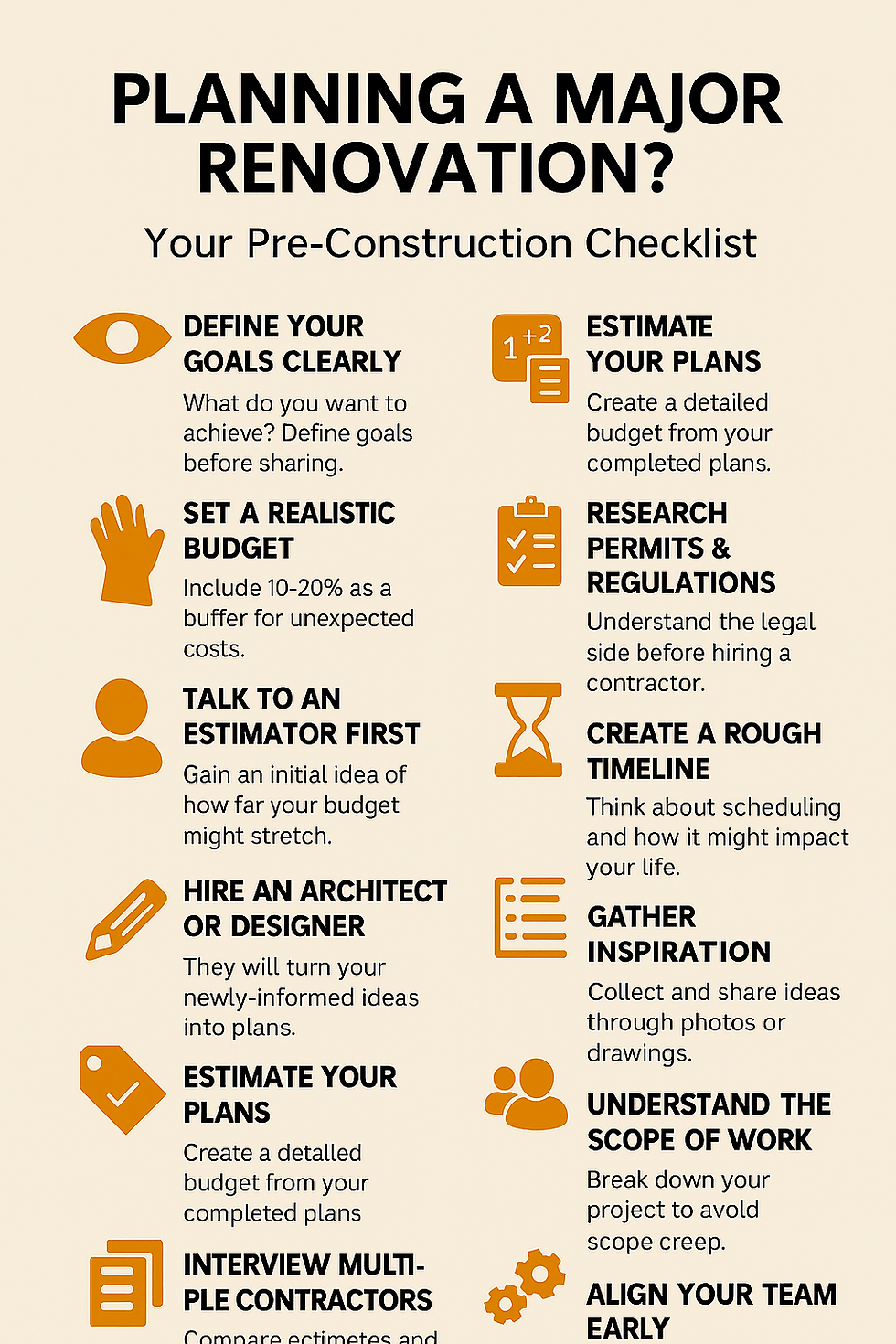🏡 Step-by-Step Guide to Building a House in South Africa
- Deen Gabriel

- Jun 19
- 2 min read

Step 1: Define Your Budget and Needs
Set a clear budget (include a 10–15% buffer for unexpected costs).
Decide on size, number of bedrooms, style, finishes, and location.
Consider long-term needs (future extensions, accessibility, etc.).
Step 2: Find and Appoint an Architect
Choose a registered architect or draftsman with local experience.
Share your vision, needs, and budget.
The architect will prepare conceptual drawings based on your brief.
Step 3: Create Detailed House Plans
Once you're happy with the concept, detailed construction drawings are created.
These include floor plans, elevations, sections, drainage layouts, and roof designs.
Your architect will also prepare a Site Development Plan (SDP) if needed.
Step 4: Submit Plans for Council Approval
Submit your plans to the local municipality for approval.
This can take anywhere from 3 to 12 weeks, depending on your area.
Make sure all documents (title deed, zoning certificate, etc.) are in order.
NHBRC enrollment is also required before construction begins.
Step 5: Appoint a Quantity Surveyor or Estimator
Get a professional cost estimate for the project.
This includes a bill of quantities (BoQ), which breaks down costs per trade (e.g., brickwork, roofing, finishes).
Helps prevent under-budgeting and allows you to compare quotes accurately.
Step 6: Choose a Builder / Contractor
Get at least 3 quotes from NHBRC-registered contractors.
Check previous work, references, and whether they have insurance and health & safety plans.
Sign a written contract outlining timelines, payment structure, scope of work, and penalties.
Step 7: Site Preparation and Groundworks
Clear the land, do soil tests if needed, and level the site.
Lay out the building according to approved plans.
Install temporary water/electricity if not already on-site.
Step 8: Foundations and Slab
Excavate trenches and pour foundation concrete.
Have foundation inspected by engineer and/or council (mandatory).
Lay the ground floor slab, compact, and waterproof as required.
Step 9: Superstructure – Walls and Roof
Build walls to roof height (brick/blockwork).
Install lintels, slabs (if double-storey), and roof trusses.
Council inspection may be needed before roofing.
Roof covering (tiles, sheeting, etc.) installed next.
Step 10: Windows, Doors & Plaster
Install external doors and windows.
Plaster internal and external walls.
Waterproofing of showers, balconies, and roofs is done at this stage.
Step 11: Plumbing & Electrical First Fix
Pipes and electrical conduits are installed before finishes.
Gas installations (if any) should also be planned now.
Step 12: Internal Finishes
Floor tiles, ceilings, built-in cupboards, and painting are completed.
Final plumbing (taps, geysers, toilets) and electrical (lights, switches) are connected.
Step 13: Final Inspections & Compliance
Request final building inspection from council.
Obtain a Certificate of Occupancy (COC) — required before moving in.
Additional compliance certificates may include:
Electrical Compliance Certificate
Plumbing Certificate (in some metros)
Gas Installation Certificate (if applicable)
Step 14: Snag List and Handover
Walk through the home with your builder and list all defects or unfinished items (snag list).
The builder must fix these before final payment is made.
Final handover includes keys, manuals, guarantees, and plans.
🧾 Optional but Recommended:
Structural Engineer: For slab, roof, or complex structural elements.
Land Surveyor: To confirm boundaries before building near property lines.
Interior Designer: For high-end or complex interiors.
Project Manager: If you’re not managing the process yourself.






Comments